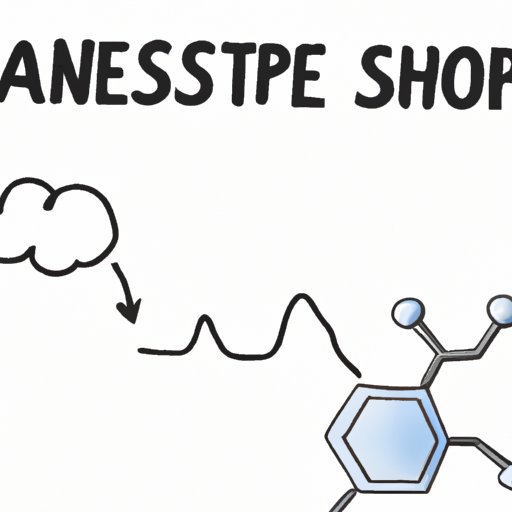Introduction
Adenosine triphosphate (ATP) is a molecule found in all living organisms that plays an essential role in powering cells and keeping us alive. In this article, we will explore the science of ATP, including its structure and function, how it affects metabolism and energy transfer, and its role in biological processes.
Exploring the Science of Adenosine Triphosphate (ATP)
To understand the science of ATP, it’s important to first define what it is and how it works. ATP is an organic compound composed of adenine, ribose, and three phosphate groups. It is the main source of energy for most cellular activities and is involved in a wide range of biological processes.
As explained by Professor David Latchman from Birkbeck University of London: “ATP acts like a battery, storing energy which is then released when needed. Cells use this energy for a range of tasks, such as synthesizing proteins and transporting molecules across membranes. ATP is the currency of energy within cells.”

A Guide to Understanding the Role of ATP in Biological Processes
ATP plays a key role in numerous biological processes, including muscle contraction, nerve impulse transmission, and biosynthesis. It is also involved in the regulation of metabolic pathways and the maintenance of homeostasis.
In addition, ATP is involved in the transport of molecules across cell membranes, the synthesis of proteins and nucleic acids, and the activation of enzymes. It is also used to fuel the production of new cells and to provide energy for the repair and maintenance of existing cells.

Unpacking the Structure and Function of ATP
ATP has a unique structure consisting of a nitrogenous base (adenine), a sugar backbone (ribose), and three phosphate groups. The structure of ATP allows it to store and release energy when needed. This energy can then be used to power various cellular activities.
The structure of ATP also enables it to act as a coenzyme, meaning that it can bind to and activate other molecules. This enables ATP to participate in the transfer of electrons and the synthesis of molecules such as proteins and nucleic acids.
Investigating the Role of ATP in Metabolism
Metabolism is the set of chemical reactions that occur within a cell to maintain life. It involves the breakdown of molecules, such as sugars and fats, into smaller compounds, which can then be used to produce energy or build new molecules.
ATP plays an important role in metabolism by transferring energy from the breakdown of molecules to other reactions that require energy. This energy transfer is facilitated by the hydrolysis of ATP, which releases energy that can then be used to drive metabolic processes.

The Chemistry Behind ATP Production
ATP is produced through a series of chemical reactions known as the citric acid cycle. During this process, energy is released from the breakdown of glucose and other molecules, which is then used to synthesize ATP.
The rate of ATP production is affected by a number of factors, including the availability of substrates, the activity of enzymes, and the concentration of ions. It is also influenced by the pH of the environment, as well as the temperature.
Examining the Interaction Between ATP and Energy Transfer
Energy transfer occurs when energy is converted from one form to another. ATP acts as an intermediary in this process, allowing energy to be transferred between different molecules and systems.
For example, ATP is involved in the transfer of energy from the breakdown of glucose to the synthesis of proteins and other molecules. It is also involved in the transfer of energy from the breakdown of lipids to the production of ATP.
Conclusion
In summary, ATP is an essential molecule found in all living organisms that plays a key role in powering cells and keeping us alive. Its structure allows it to store and release energy when needed, and it is involved in a wide range of biological processes. It is also involved in the regulation of metabolism and the transfer of energy between molecules and systems.
(Note: Is this article not meeting your expectations? Do you have knowledge or insights to share? Unlock new opportunities and expand your reach by joining our authors team. Click Registration to join us and share your expertise with our readers.)
